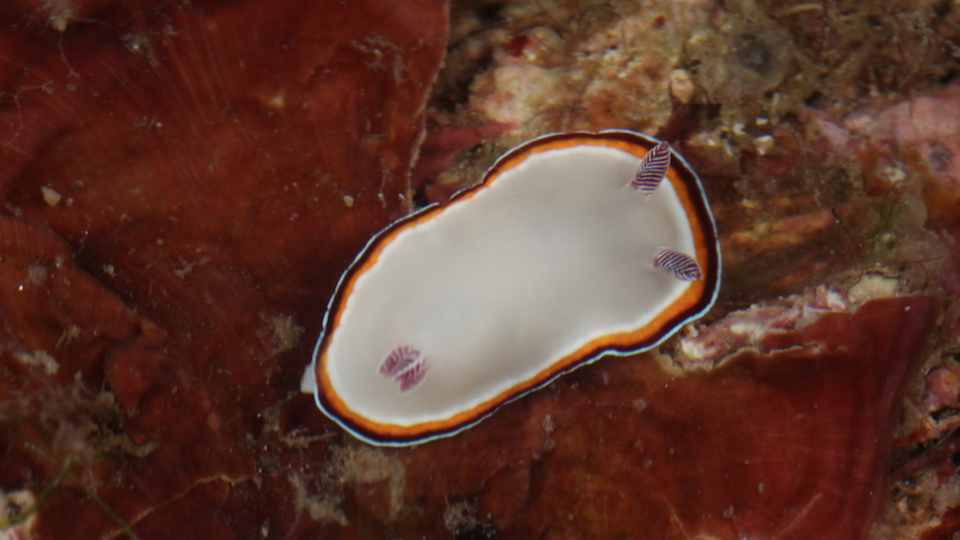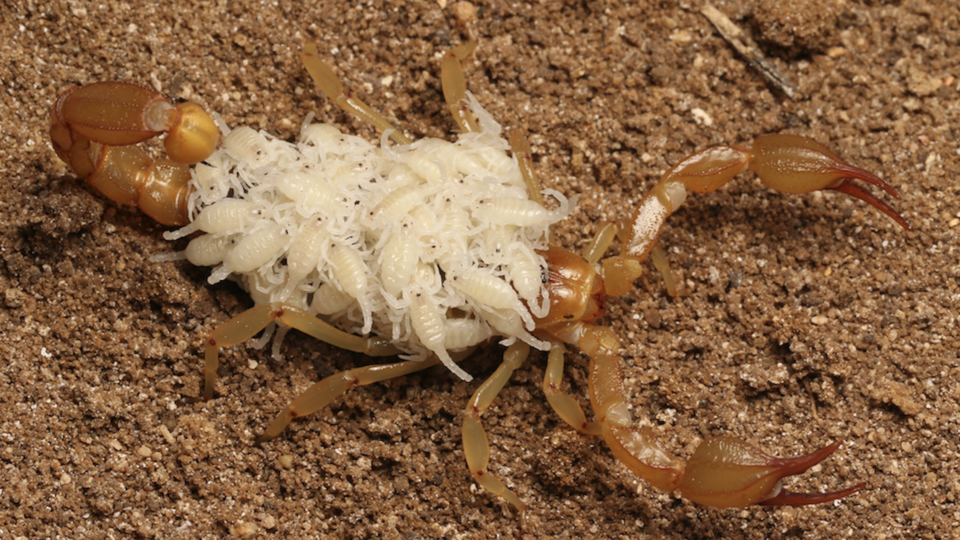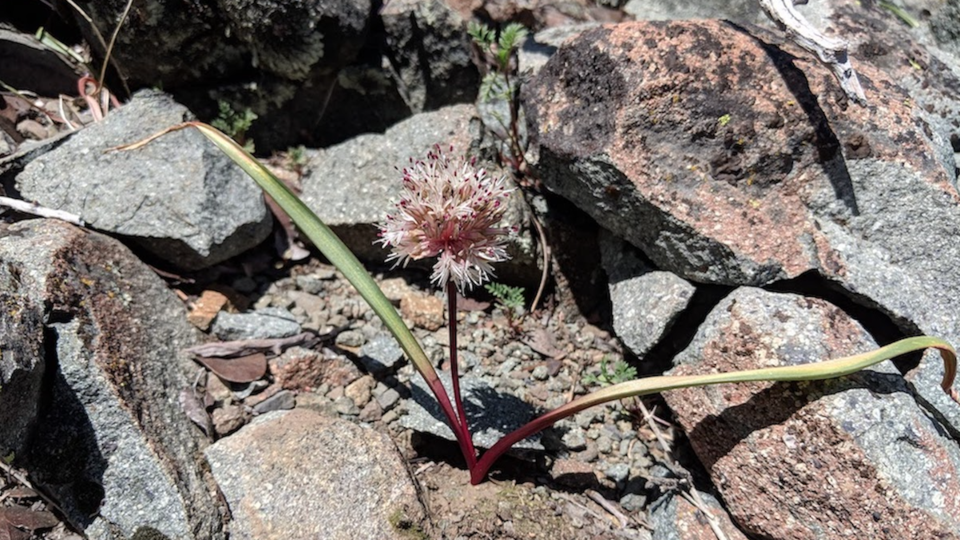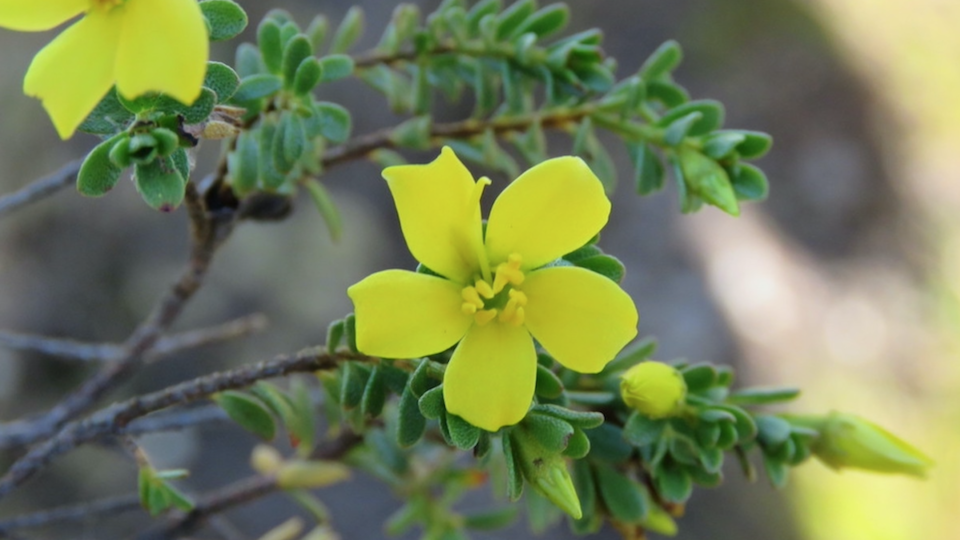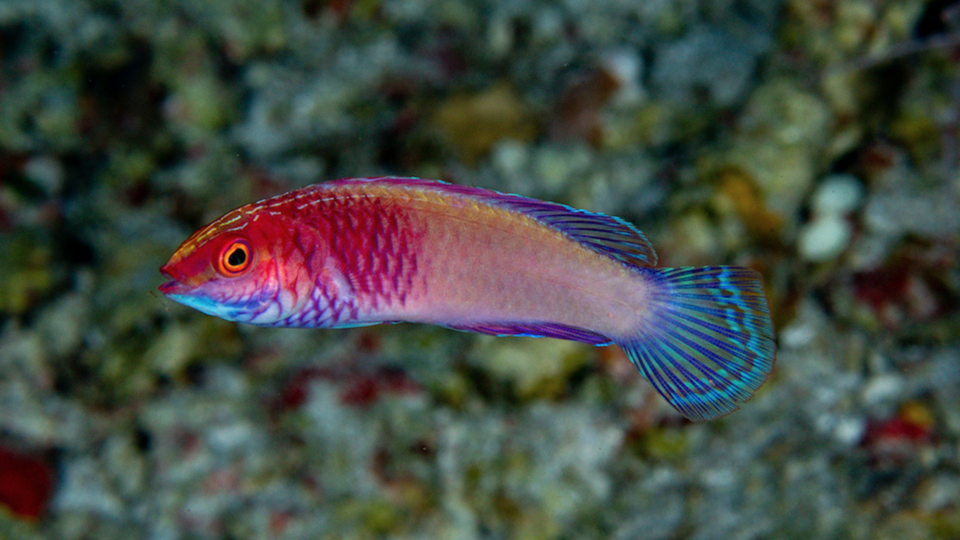From the rock-strewn peaks of eastern Brazil to the ‘twilight zone’ coral reefs of the Maldives, these new discoveries grow Earth’s tree of life
SAN FRANCISCO, CA (December 20, 2022) — In 2022, researchers at the California Academy of Sciences added 146 new animal, plant, and fungi species to the tree of life, enriching our understanding of Earth’s biodiversity and strengthening our ability to regenerate the natural world. The new species include 44 lizards, 30 ants, 14 sea slugs, 14 flowering plants, 13 sea stars, seven fishes, four beetles, four sharks, three moths, three worms, two scorpions, two spiders, two lichens, one toad, one clam, one aphid, and one sea biscuit. More than a dozen Academy scientists—along with several dozen international collaborators—described the new-to-science species.
Proving that our vast and dynamic planet still harbors unexplored places with never-before-recorded plants and animals, the scientists made their finds across six continents and three oceans, from isolated mountain peaks to hundreds of feet beneath the ocean’s surface. Their efforts help advance the Academy’s mission to regenerate the natural world through science, learning, and collaboration.
“New species research is critical for understanding the diversity of life on Earth and identifying ecosystems most in need of protection,” says Academy virologist and Chief of Science Shannon Bennett, PhD. “As we’ve seen over the last two weeks at the United Nations Biodiversity Conference (COP15), biodiversity science is at the forefront of global conservation action and is key in unifying nations and equipping them with the tools and information necessary to reverse species extinction rates by 2030. By uncovering and documenting new species, we can contribute to this landmark goal and ensure that our natural world remains rich and diverse for generations to come.”
Below are highlights from the 146 species described by the Academy this past year. For a full list of species and hi-res images, please contact press@calacademy.org.
Radiating geckos
Academy Research Associate Aaron Bauer, PhD, added 28 geckos to the genus Bavayia, more than doubling the number of known species within the genus from 13 to 41. Bavayia is a group of small forest geckos from the mountains of New Caledonia, with species characterized by fairly neutral brown and white markings. “Though all species within the genus physically look quite similar, we discovered they are in fact genetically distinct,” Bauer says. Unlike many related island species, which tend to physically diverge from one another as they adapt to various habitats and resources, Bavayia underwent an evolutionary process called nonadaptive radiation, in which species diversify genetically but maintain similar physical traits. “Nearly every mountain in New Caledonia hosts a unique Bavayia species, and these habitats share many of the same conditions,” Bauer explains. “The result is several species that are often almost indistinguishable from one another.”
Although New Caledonia is not a focus of the Academy’s Islands 2030 initiative to halt biodiversity loss and habitat degradation on five key tropical archipelagos, this research serves as an example of the importance of protecting island ecosystems.
California's Minnesota Mountain onion
Academy Research Associate Julie Kierstead stumbled upon the newly described Minnesota Mountain onion on a helicopter trip through California’s Klamath Mountains in the spring of 2015. “The pilot decided to put us down on Minnesota Mountain for a half hour or so,” Kierstead recalls. “It was really in the middle of nowhere.” When she stepped out onto the seemingly uninteresting summit of loose rock and small shrubs, she noticed an unfamiliar species of allium—the group of flowering plants including onions, garlic, and shallots—in bloom. After four years of searching the Klamath range for a second population, Kierstead’s research partner discovered a small patch of the unidentified species on the summit of nearby Salt Creek Mountain.
“As far as we know, the Minnesota Mountain onion can only be found on these two neighboring peaks,” Kierstead says. “It clearly favors this specific habitat.”
Both peaks are located within a microclimate with higher rainfall than that of the surrounding region—which is increasingly plagued by wildfires—allowing certain species such as this onion to thrive. But because it lives in such a restricted habitat, any change in its environment, from a severe weather event to a disease outbreak, could drive the new-to-science species to extinction.
Sea slugs great and small
It was a milestone year for Academy Curator of Invertebrate Zoology Terry Gosliner, PhD, who celebrated 40 years with the Academy’s Institute for Biodiversity Science and Sustainability and discovered 14 new-to-science sea slugs from the Indo-Pacific region. Gosliner has described about a quarter of all sea slugs known to science, and lately he's focused on smaller, harder-to-find species. At one and a half centimeters in length, Goniobranchus fabulus—whose name translates to “small bean”—is the largest species in this year’s set of sea slugs. Other species, like the diminutive Murphydoris adusta, are as tiny as 2 millimeters long (about the width of a strand of spaghetti). Gosliner and his team conducted their research with the Center for Comparative Genomics (CCG), the Academy’s in-house lab for genomics and DNA sequencing. For Gosliner, the CCG is not only a dynamic workspace for trying new techniques, but a collaborative training space to host researchers and students from around the world: “It takes a global community to build an understanding of biodiversity.”
Academy researcher Lynn Bonomo agrees, attributing much of their success to the community of sea slug enthusiasts on the community science platform iNaturalist. “Users are uploading observations in real time, which gives us a snapshot of current species ranges,” Bonomo says. “It’s a powerful tool for tracking changes and monitoring the health of coral reefs and other marine ecosystems.”
Flowers from the Campo Rupestre
This year, Emeritus Curator of Botany Frank Almeda, PhD, and Academy Research Associate Ricardo Pacifico described several new species of flowering plants from the ragged peaks of Brazil’s Campo Rupestre. Known for extreme temperatures, strong winds, and nutrient-deficient soils, this mountainous ecoregion of shrublands and rocky outcrops is a seemingly barren landscape. But it is because of these harsh conditions that scientists continue to make new species discoveries. Such strong ecological pressures have prompted life to adapt to this severe environment in unique ways, resulting in a wealth of plant life found nowhere else on Earth. Pacifico came across Microlicia prostrata, a yellow-blossomed shrub, on a remote peak that had never been surveyed by botanists before. “The shrubs on the summit were less than half a meter high,” says Pacifico. “It was like walking through a garden.”
Like many of the plants Almeda and Pacifico described this year, M. prostrata can only survive on the specific mountaintop where it was found. As global temperatures continue to increase, populations of plants—particularly those that have adapted to narrow temperature ranges—are forced to migrate to cooler regions at higher elevations. But for peak-loving plants like M. prostrata, there’s nowhere left to move.
Vamos a la playa scorpions
Bay Area high school students Harper Forbes and Prakrit Jain discovered two new-to-science scorpions with the help of Academy Curator of Arachnology Lauren Esposito, PhD. The budding scientists first noticed the unidentified species iNaturalist, and soon went into the field to find, collect, and eventually describe them. Paruroctonus soda and Paruroctonus conclusus are small, desert-dwelling scorpions from the dry, salty lake beds of Central and Southern California. While P. soda inhabits federally protected land, P. conclusus can only be found on a narrow strip of unprotected land—about a mile long and only a few feet wide in some places—making the entire species highly vulnerable to human-driven threats. “The entire species could be wiped out with the construction of a single solar farm, mine, or housing development,” Forbes says. “Mapping the biodiversity of a given area can help build the case for why that land should be protected.”
For scientists, conservation managers, and the growing communities of wildlife observers on platforms like iNaturalist, these newly described species provide a better understanding of California’s biodiversity and the places most in need of protection—a cornerstone of the Academy’s Thriving California initiative.
First, but not last, Maldivian-described wrasse
From the dazzling yellowtail damselfish to a deep sea grenadier, Academy researchers described seven species of fish this year. In partnership with the Maldives Marine Research Institute (MMRI) and the University of Sydney as part of the Academy’s Hope for Reefs initiative, Academy Curator of Ichthyology Luiz Rocha, PhD, introduces the rose-veiled fairy wrasse—one of the first species to be named in the local Dhivehi language (“finifenmaa” meaning “rose”, a nod to both its pink hues and the island nation’s national flower). The fairy wrasse is also the first-ever species to be formally described by a Maldivian researcher.
“It has always been foreign scientists who have described species found in the Maldives without much involvement from local scientists, even those that are endemic to the Maldives,” said study co-author and MMRI biologist Ahmed Najeeb in a statement earlier this year. “This time it is different and getting to be part of something for the first time has been really exciting, especially having the opportunity to work alongside top ichthyologists on such an elegant and beautiful species.”
The California Academy of Sciences is a renowned scientific and educational institution with a mission to regenerate the natural world through science, learning, and collaboration. Based in San Francisco’s Golden Gate Park, it is home to a world-class aquarium, planetarium, and natural history museum, as well as innovative programs in scientific research and environmental education—all under one living roof. Museum hours are 9:30 am – 5:00 pm Monday – Saturday, and 11:00 am – 5:00 pm on Sunday. Admission includes all exhibits, programs, and shows. For daily ticket prices, please visit www.calacademy.org or call (415) 379-8000 for more information.
The Institute for Biodiversity Science and Sustainability at the California Academy of Sciences is at the forefront of efforts to regenerate the natural world through science, learning, and collaboration. Based in San Francisco, the Institute is home to more than 100 world-class scientists, state-of-the-art facilities, and nearly 46 million scientific specimens from around the world. The Institute also leverages the expertise and efforts of more than 100 international Associates and 450 distinguished Fellows. Through expeditions around the globe, investigations in the lab, and analysis of vast biological datasets, the Institute’s scientists work to understand the evolution and interconnectedness of organisms and ecosystems, the threats they face around the world, and the most effective strategies for ensuring they thrive into the future. Through deeply collaborative partnerships and innovative public engagement initiatives, they also guide critical conservation decisions worldwide, inspire and mentor the next generation of scientists, and foster responsible stewardship of our planet.
Press Contacts
If you are a journalist and would like to receive Academy press releases please contact press@calacademy.org.
Digital Assets
Hi-res and low-res image downloads are available for editorial use. Contact us at press@calacademy.org to request access.

